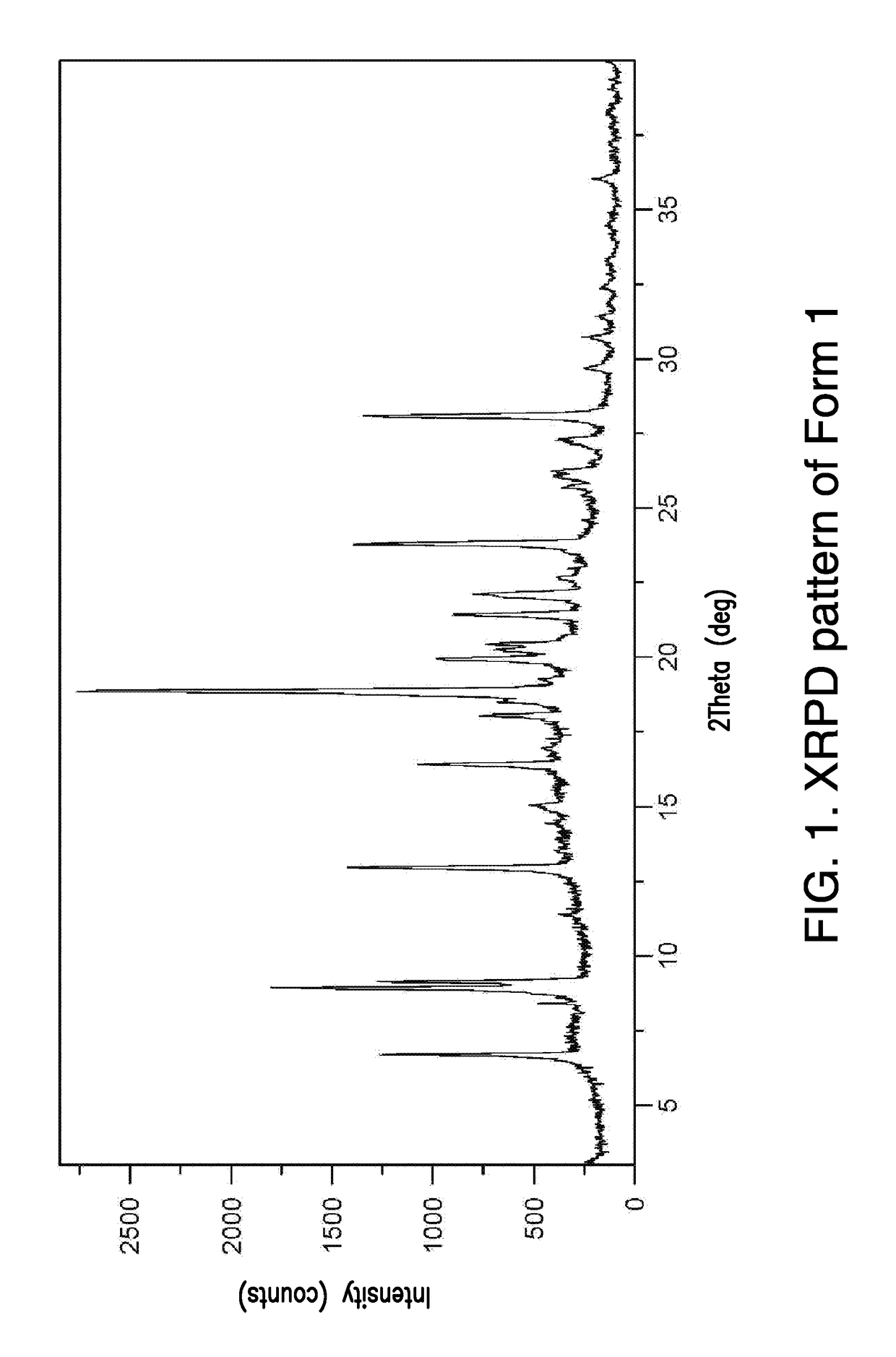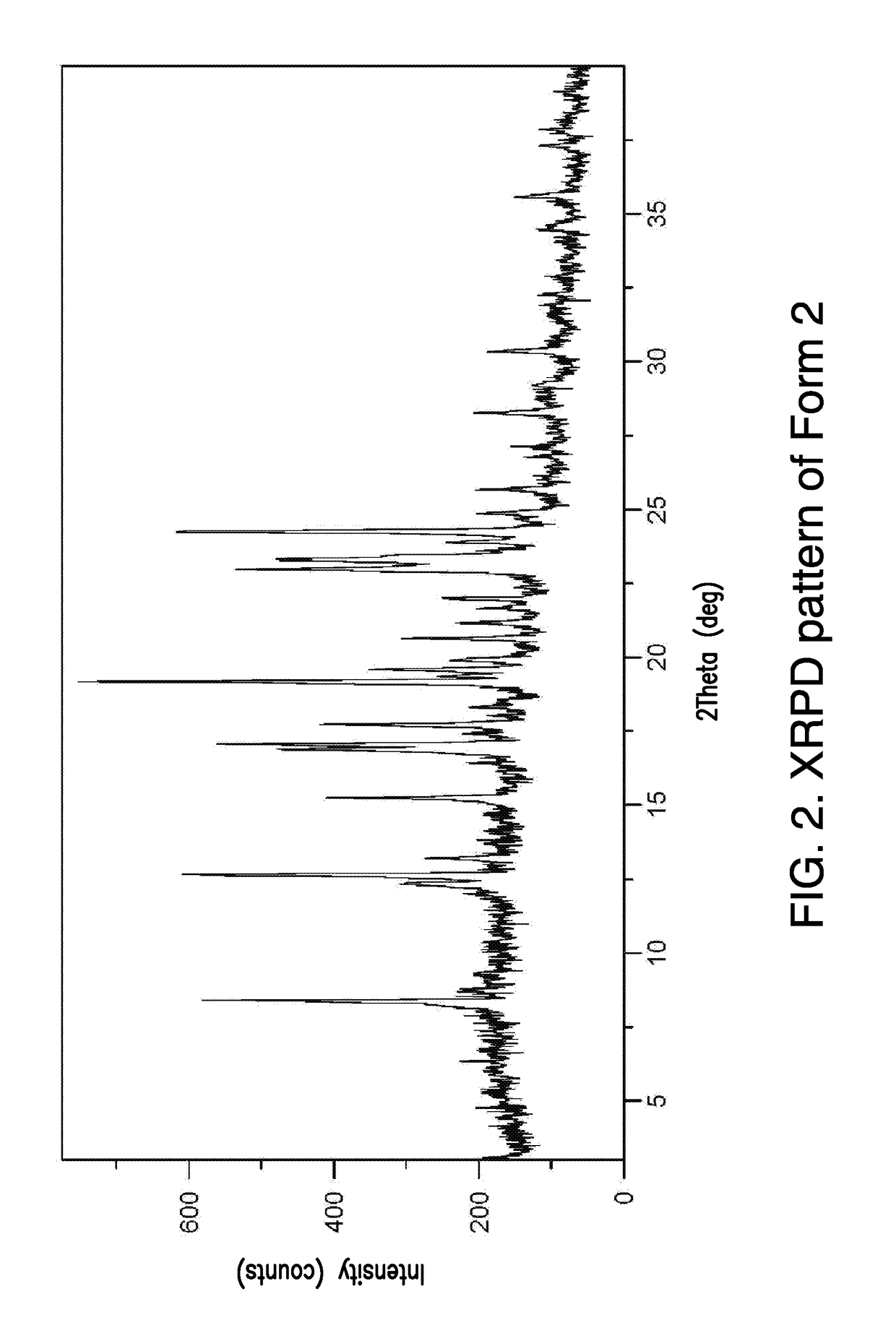Therapeutically active compounds and their methods of use
a technology of therapeutic active compounds and their methods, applied in the field of therapeutic active compounds and their, can solve the problems of pharmaceutical formulations that do not meet the high quality and stringent requirements imposed on pharmaceutical composition formulations, irregular formulations, and difficult filtering and washing free of impurities
- Summary
- Abstract
- Description
- Claims
- Application Information
AI Technical Summary
Benefits of technology
Problems solved by technology
Method used
Image
Examples
example 1
, Step 6; Preparation of 2-methyl-1-(4-(6-(trifluoromethyl)pyridin-2-yl)-6-(2-(trifluoromethyl)-pyridin-4-ylamino)-1,3,5-triazin-2-ylamino)propan-2-ol
[0399]THF (290 mL), 4-chloro-6-(6-(trifluoromethyl)pyridin-2-yl)-N-(2-(trifluoro-methyl)-pyridin-4-yl)-1,3,5-triazin-2-amine (29.0 g, 0.06893 mol), sodium bicarbonate (8.68 g, 0.1033 mol), and 1,1-dimethylaminoethanol (7.37 g, 0.08271 mol) are added to the reaction vessel at 20-35° C. The resulting slurry is heated to reflux (75-80° C.) for 16-20 h. The reaction is cooled to 30-40° C. and THF evaporated at below 45° C. under reduced pressure. The reaction mixture is cooled to 20-35° C. and rinsed with ethyl acetate and water, and the ethyl acetate layer collected. The organic layer is concentrated under vacuum at below 45° C. then rinsed with dichloromethane and hexanes, filtered and washed with hexanes and dried for 8-10h at 45-50° C. under vacuum to provide 2-methyl-1-(4-(6-(trifluoromethyl)pyridin-2-yl)-6-(2-(trifluoromethyl)-pyridi...
example 2
Synthesis of Compound 1
[0400]Acetone (435.0 mL) and compound 3 (87.0 g, 0.184 mol) are added to the reaction vessel at 20-35° C. In a separate vessel, methanesulfonic acid is added over 10 minutes to cold (0-4° C.) acetone (191.4 mL) while stirring to prepare a methane sulfonic acid solution. While passing through a micron filter, the freshly prepared methanesulfonic acid solution is added dropwise to the reaction mixture. The resulting slurry is filtered using nutsche filter and washed with acetone. The filtered material is dried for 30-40 minutes using vacuum to provide compound 1.
Example 2A
Synthesis of Compound 3 Form 16
Example 2A, Step 1: Preparation of 6-trifluoromethyl-pyridine-2-carboxylic acid
[0401]Diethyl ether (4.32 L) and hexanes (5.40 L) are added to the reaction vessel under N2 atmosphere, and cooled to −75° C. to −65° C. Dropwise addition of n-Butyl lithium (3.78 L in 1.6 M hexane) under N2 atmosphere at below −65° C. is followed by dropwise addition of dimethyl amino ...
example 2a
, Step 6: Preparation of2-methyl-1-(4-(6-(trifluoromethyl)pyridin-2-yl)-6-(2-(trifluoromethyl)-pyridin-4-ylamino)-1,3,5-triazin-2-ylamino)propan-2-ol compound 3
[0406]THF (290 mL), 4-chloro-6-(6-(trifluoromethyl)pyridin-2-yl)-N-(2-(trifluoro-methyl)-pyridin-4-yl)-1,3,5-triazin-2-amine (29.0 g, 0.06893 mol), sodium bicarbonate (8.68 g, 0.1033 mol), and 1,1-dimethylaminoethanol (7.37 g, 0.08271 mol) are added to the reaction vessel at 20-35° C. The resulting slurry is heated to reflux (75-80° C.) for 16-20 h. The reaction is cooled to 30-40° C. and THF evaporated at below 45° C. under reduced pressure. The reaction mixture is cooled to 20-35° C. and rinsed with ethyl acetate and water, and the ethyl acetate layer collected. The organic layer is concentrated under vacuum at below 45° C. then rinsed with dichloromethane and hexanes, filtered and washed with hexanes and dried for 8-10 h at 45-50° C. under vacuum to provide 2-methyl-1-(4-(6-(trifluoromethyl)pyridin-2-yl)-6-(2-(trifluoromet...
PUM
| Property | Measurement | Unit |
|---|---|---|
| body weight | aaaaa | aaaaa |
| body weight | aaaaa | aaaaa |
| 2θ angles | aaaaa | aaaaa |
Abstract
Description
Claims
Application Information
 Login to View More
Login to View More - R&D
- Intellectual Property
- Life Sciences
- Materials
- Tech Scout
- Unparalleled Data Quality
- Higher Quality Content
- 60% Fewer Hallucinations
Browse by: Latest US Patents, China's latest patents, Technical Efficacy Thesaurus, Application Domain, Technology Topic, Popular Technical Reports.
© 2025 PatSnap. All rights reserved.Legal|Privacy policy|Modern Slavery Act Transparency Statement|Sitemap|About US| Contact US: help@patsnap.com



